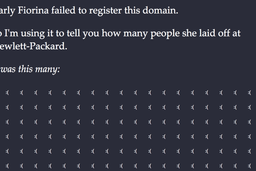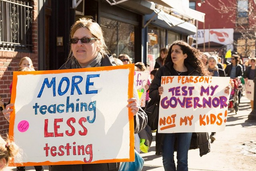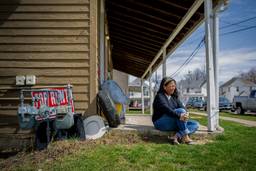For the Majority of Undocumented Immigrants Who Remain in the Shadows, Churches Offer Sanctuary
6 million undocumented immigrants won’t receive relief under Obama’s executive action. Some churches are providing them with hope.
Kevin Solari

On November 11, Miguel Sanchez Olguin gathered with his family and friends behind the altar of Our Lady of Guadalupe Mission to hear Father Jose Landaverde make an announcement: The church would grant Sanchez Olguin sanctuary from deportation. “We do what all Christians should do,” Landaverde said.
Sanchez Olguin, an undocumented immigrant from Mexico, was turned in to Immigration and Customs Enforcement (ICE) after receiving a speeding ticket in Kansas City in 2011. Since November 11, he has lived in a back room of the small Our Lady of Guadalupe Mission, a converted storefront church in Chicago’s Little Village neighborhood.
Though Sanchez Olguin has lived in the U.S. for 19 years, he is not among the 5 million undocumented people who will be granted temporary protection from deportation by President Obama’s executive action. Announced Thursday, the plan expands the existing Deferred Action for Childhood Arrivals program. It will also delay deportations for undocumented parents of children who are citizens or legal permanent residents and have lived here for five or more years. But Sanchez Olguin has no children, and because he was over 15 when he came here, he doesn’t qualify for DACA.
For years, the more than 11 million undocumented people in the United States have lived in limbo, unsure if or when agents from ICE, the Department of Homeland Security (DHS), or any of a dozen other federal, state and local agencies will appear with a deportation order. Many have deep roots here, having lived and worked in the United States for years or decades. When ICE deports them, the loss is felt throughout their communities.
To preserve those communities, in recent months some U.S. congregations have turned to an ancient tradition. Since Old Testament times, in various cultures, holy places have been considered sites of refuge. The practice persisted in Europe through the Middle Ages until the laws came off the books during the Reformation. Our Lady of Guadalupe Mission has drawn on this tradition to protect immigrants facing deportation in recent years, part of a movement by congregations in the United States to shelter undocumented immigrants inspired by a 2011 ICE memo that listed places of worship — along with schools, hospitals and public demonstrations — as “sensitive” locations where ICE will not conduct arrests, interviews, searches or surveillance.
This isn’t the first time a sanctuary movement has blossomed in the United States. In 1971, churches began offering shelter to sailors from the U.S.S. Constitution who didn’t want to return to Southeast Asia. Ten years later, Rev. John Fife declared that Tucson’s South Side Presbyterian Church would welcome undocumented people fleeing the violence of El Salvador, where tens of thousands were being slaughtered. The idea took off, and by the end of the 1980s, more than 500 churches and synagogues sheltered thousands of Central American refugees.
Landaverde, the pastor of Our Lady of Guadalupe, fled the violence of El Salvador as a youth. Since founding the mission in 2007, he and his congregation have focused on community outreach and supporting undocumented individuals. The church has housed several immigrants facing deportation in recent years, including Elvira Arellano, whose case drew international headlines, and Flor Crisostomo. In September, they took in Beatriz Ramirez, a U.S. resident of 11 years with two U.S.-born children, into sanctuary.
Like many, Ramirez faced deportation after a brush with the police — but in her case, she was never suspected of a crime. In 2009, she was the victim of a sexual assault and cooperated with law enforcement in the investigation. That should have made her eligible for a special U visa, reserved for crime victims who, after suffering physical or mental abuse, helped police. But because the facts of the case and her cooperation had not yet been confirmed by a public official in downstate Madison County, Illinois, where her attack took place, her visa had not yet been approved. Entering sanctuary bought her time until her case was reopened, on October 27, allowing her to leave the Mission without fear of being deported.
Ramirez took sanctuary openly and publicly. This marks a key difference between today’s movement and that of the 1980s, notes Rae Anne Lafrenz, a coordinator for the Interfaith Movement for Immigrant Justice (IMIrJ), a network of some 30 active congregations involved in immigrant justice. The refugees in the 1980s were fleeing civil wars created or funded by the United States, making it difficult for the U.S. to grant asylum without acknowledging culpability. That meant the movement was more clandestine and refugees had to be hidden. Fife’s church was infiltrated by the Immigration and Naturalization Service and in 1986, Fife and seven others in the sanctuary movement were found guilty of conspiracy.
Fife served five years probation and went on to found No More Deaths, a humanitarian aid group for immigrants making the treacherous journey across the Mexican-American border. Speaking recently at Shadow Rock United Church in Phoenix, Fife reflected upon the rebirth of the sanctuary movement. While the circumstances are different, the values remain the same, he says: “To save lives, to keep families intact, to say to the government, ‘You have absolutely failed in your responsibility to do justice.’”
Fittingly, Southside Presbyterian, where Fife is now pastor emeritus, has played a key role in the rebirth of the Sanctuary Movement. Daniel Neyoy Ruiz was facing deportation after having lived in the United States for 14 years. He sought sanctuary at Southside Presbyterian this May, and the congregation agreed to shelter him and launched a campaign on his behalf, calling local government officials, circulating and signing petitions and drumming up support in the community. It was successful: On June 9, after 28 days in sanctuary, Ruiz was granted a stay of removal.
Churches around the country of various sizes and denominations took note, and one by one, began offering sanctuary. What began as scattered instances quickly grew into a national network. Church World Service (CWS), an activist group begun in the aftermath of World War II to bring church aid to war-torn areas, hosts the Sanctuary2014 website — a central hub for the national network of information, petitions, and news — and is using its network to help congregations join the sanctuary movement.
“We’ve seen the House not do anything on immigration reform, we’ve seen the Obama administration reform only do what’s politically expedient for them, and we feel that, as people of faith, we can’t stand idly by,” says Reverend Noel Andersen, grassroots coordinator for immigrants’ rights at CWS. “Some people have said this is civil disobedience. [But] the laws around ‘harboring’ [a federal crime] are very unclear about whether sheltering someone without concealing them is actually harboring.”
“There are a lot of logistical concerns to take into account, and a lot of responsibility,” says Andersen. “One of the things we focus on in our model is to not make just one congregation that is doing the work but to really bring in other congregations.”
That work consists of feeding and housing the person in sanctuary, helping the family with finances, making calls and writing letters to ICE and other government agencies, organizing vigils, circulating petitions and getting the mayor and city council on board.
On the day Sanchez Olguin went into sanctuary in Little Village, Landaverde announced a plan to ask for help from churches in the more affluent suburbs north of Chicago. The mission is not providing luxury housing: Sanchez Olguin’s twin bed does not have a frame, and the wallpaper of his room is peeling. Landaverde lives in a similar room down the hall. What little money was spent was used for renovating the worship space. There, the congregation has made changes to the appropriated storefront: carpet, fresh paint, stained glass windows. The rest of the church, however, is humble.
“We live poor,” Landaverde says.
As for the concern that some of the people in sanctuary have been charged with crimes, movement activists says they deserve the due process anyone else would receive, rather than being sent straight to deportation proceedings. “We don’t believe if someone gets a DUI they should be separated from their family,” says Andersen.
Sanctuary is just a temporary solution to a larger problem, say activists. “It is ultimately a political campaign. At the heart of it is a broken immigration system,” says Launius.
The movement has seen some successes on the local level. In September, Portland, Oregon, Mayor Charlie Hales came out in support of Francisco Aguirre, who has been in sanctuary at Portland’s Augustana Lutheran Church September 19. Hales said in a statement, “I believe Francisco should remain in the United States, and in Portland, until his case can reach a humane conclusion.”
Aguirre is a father of three children, all U.S.-born citizens, and a founder of the Portland-based VOZ Worker’s Rights Education Project, which educates immigrants and day laborers about their workplace rights. He was brought to ICE’s attention after he was pulled over for a suspected DUI in August. Often, undocumented people are picked up by the local police for minor infractions, then held for extended periods of time in order for ICE to scoop them up and begin deportation proceedings. Critics of this practice say that it not only leads to protracted detentions, but it also forces local authorities to expend their own resources on behalf of ICE.
However, a growing number of cities, called Sanctuary Cities, have announced they will no longer help the federal government and ICE in deportations. In other cities, federal immigration authorities rely on local police to hold people suspected of being undocumented until the feds can come and pick them up. This can mean days holding someone on the local authorities’ dime. Cities like Chicago, Milwaukee, Miami, Denver and, in October, New York City have all said they would no longer detain immigrants this way.
But the biggest victory to date came last night when President Obama announced he was finally taking the executive action on immigration that he had promised this summer, then deferred until after the midterm elections.
Republicans immediately (and in some cases, preemptively) criticized the plan, with Texas Gov. Rick Perry threatening to sue President Obama for overreach based on rumors of the announcement circulating Wednesday, and Sen. Jeff Sessions (R-Alabama) and Rep. Steve King (R-Iowa) warning that Congress can defund the action.
Critics also note that executive action is not permanent: The next president could easily, and unilaterally, undo President Obama’s efforts with a similar stroke of the pen.
Immigrant rights groups, meanwhile, say 5 million is not enough, pointing to the 6 million who will remain in the shadows. Sanchez Olguin is not the only person in sanctuary who won’t benefit from the action. Aguirre is ineligible because of his prior criminal history.
Sanctuary movement activists say they won’t rest until the immigration system is permanently fixed for everyone.
“There is a need for [immigration reform] to be as expansive as possible and, for us, that means all 11 million people,” says Andersen.
Excerpted in the January issue of In These Times.

I hope you found this article important. Before you leave, I want to ask you to consider supporting our work with a donation. In These Times needs readers like you to help sustain our mission. We don’t depend on—or want—corporate advertising or deep-pocketed billionaires to fund our journalism. We’re supported by you, the reader, so we can focus on covering the issues that matter most to the progressive movement without fear or compromise.
Our work isn’t hidden behind a paywall because of people like you who support our journalism. We want to keep it that way. If you value the work we do and the movements we cover, please consider donating to In These Times.







